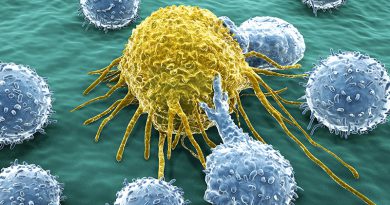The Great Defender
Published on June 24th, 2013 by user.
“Daddy has a chance to join the Avengers.” That’s how John “Jay” Wellons III, M.D., MSPH, explained to his 7-year-old son, Jack, why the family was moving to Nashville, comparing the Monroe Carell Jr. Children’s Hospital at Vanderbilt to Marvel Comics’ league of superheroes.
It was a metaphor the boy could get on board with (his reaction was “OK, let’s go!”), but for young patients who need brain surgery, Wellons, the new chief of Pediatric Neurosurgery, truly is a superhero.
With high-tech gadgets, tremendous smarts, keen senses and incredible agility and speed, Wellons isn’t faster than a speeding bullet or able to leap tall buildings in a single bound. But he is an expert in hydrocephalus, brain tumors, brachial plexus nerve injury and minimally invasive endoscopic procedures.
Wellons brings national research networks that will allow Children’s Hospital to expand not only in scientific discovery but in the daily clinical care of children with neurosurgical problems. While he prefers to spurn the limelight like Peter Parker or Clark Kent, his ultimate goal has always been working for the good of children.
Like the origin story of most superheroes, Wellons didn’t understand or want his medical superpowers at first. In high school and college, he tried to make himself an English professor, but kept up his pre-med courses just in case. In medical school at the University of Mississippi, he thought he would be a small-town family medicine doctor, “getting paid in chickens and having plenty of time to write,” but he kept being drawn to OR 16, where the neurosurgery procedures were taking place.
“I was the guy in the anatomy lab spending hours there on a Saturday while I could hear people cheering at the football game across the street and I’m up there dissecting the sciatic nerve. I just thought it was fascinating,” he said.
The native of Mississippi and a “child of the South,” Wellons did his residency at Duke University and joined the faculty at the University of Alabama-Birmingham (UAB), practicing at Children’s Hospital of Alabama.
One day Wellons’s mentor said he had a career game changer—the Hydrocephalus Clinical Research Network (HCRN).
Hydrocephalus, known as “water on the brain,” is caused by abnormal accumulation of cerebrospinal fluid in the brain. If too much fluid builds up, it can cause swelling, mental disability and death. The most common treatment is inserting a shunt, or tube, that drains the excess fluid to other areas of the body where it can be better absorbed.
A group of parents, philanthropists and physicians frustrated by the lack of research in hydrocephalus started the HCRN to conduct nationwide studies. Children’s Hospital of Alabama was one of the original sites in the network and Wellons joined the HCRN executive committee.
“If you look at the number of patients being enrolled in studies before the HCRN, it was about 67 a year. After the network was formed it was around 670,” Wellons said. “The annual incidence of hydrocephalus is actually higher than pediatric brain tumors and slightly less than that of juvenile diabetes. The cost is estimated to be over a billion dollars annually. It’s a much more common disease process than most people think, and it’s not a one-size-fits-all disease.”
But like any great comic book star, Wellons first needed to hone his skills—in the least superhero subject, statistics.
“I really had no idea when it came to the methodology and analysis of it. They talked about chi square analysis and regression models and it was like the adult voice on Charlie Brown— wah, wah, wah, wah.”
Wellons spent three years getting his Master of Science in Public Health and says it fundamentally changed the way he thought about neurosurgery.
“In classes we looked at large cardiology and asthma cohorts, and I realized that neurosurgery is a field that is technically advanced but statistically not so much. The HCRN is a step in the right direction.”
The HCRN started enrolling patients around the country in different research studies looking at ways to improve shunt placement and longevity and ways to reduce shunt infections.
“We’ve reduced shunt infections by almost half through a simple surgical checklist. We’ve standardized and improved the care of premature infants with hydrocephalus. We’re looking at how patients are affected neuropsychologically by the treatment they’ve had. It’s really a phenomenal list of things and a remarkable thing to be a part of,” Wellons said.
“I think back to my mentor saying this was a game changer and it absolutely was.”
When the offer came to move to Nashville and join Vanderbilt, Wellons said it took a lot of soul searching because his wife, Melissa Wellons, M.D., had a successful research career and busy endocrinology practice and they were reluctant to uproot their two young children. But the opportunity to grow the neurosurgery program won.
“There are a lot of clinical programs here that are ongoing and excellent, like the fetal neurosurgery program here that has been championed by Noel Tulipan [M.D., professor of Neurological Surgery]. My goal is to look at the other areas within pediatric neurosurgery and bring them up to that level of excellence, all the while providing excellent clinical care and field-leading or field-changing research.”

Vanderbilt’s Department of Pediatric Neurosurgery treats a variety of neurological conditions, including brain tumors, epilepsy, congenital and vascular malformations and spina bifida, and maintains a robust research portfolio. It has been included in U.S. News & World Report’s “Best Children’s Hospitals” specialty rankings. The department is a pioneer in performing fetal surgery to improve the outcomes of children with spina bifida, the most common birth defect of the central nervous system. In 1999, Tulipan and colleagues published research that demonstrated that babies who have corrective surgery for a serious form of spina bifida (myelomeningocele) while still in the uterus, experience a reduction in potentially life-threatening hydrocephalus and have an increased ability to walk. That led to a landmark, seven-year National Institutes of Health-funded trial, called Management of Myelomeningocele Study (MOMS), that tested the safety and efficacy of surgical repair and demonstrated clear benefits. During the study, Vanderbilt became a nationwide destination for families seeking treatment. The trial was halted early in December 2010 because the benefits of fetal surgery were so significant.
Once at Children’s Hospital, Wellons immediately filled a white board on his office wall with projects and ideas to build on to an already successful program. He recruited two colleagues from UAB—Chevis Shannon, MBA, MPH, Dr.PH., who is now the director of the Vanderbilt Pediatric Neurosurgery Clinical Research Initiative, and Rob Naftel, M.D., a neurosurgeon who joins the faculty in August.
He implemented a protocol for the management of children with traumatic brain injury, is expanding the brain tumor program, is working to join national research networks for Chiari Malformation (a malformation of the brain) and syringomyelia (a disorder in which a cyst forms within the spinal cord), and continues to serve as primary investigator for a multi-center study on shunting outcomes in post-hemorrhagic hydrocephalus (SOPHH). It compares outcomes of certain procedures to help children have the best outcome.
“It is amazing when you go in one exam room and see a child with a severe interventricular hemorrhage that had a shunt and they’re like ‘Hey Dr. Jay! I got all As and Bs on my report card!’ Then in the next room, same scenario and they’re wheelchair bound and non-communicative. Is there something that we can do as surgeons early on in the process to help get them into the first group? We’re coming close to being able to actually answer that question.”
Wellons says the overall goal of all of these projects is to advance the field of Neurosurgery.
“We’re using large data sets of experience to turn around and impact patients. That’s what you get at an academic medical center like Vanderbilt and this Children’s Hospital. That’s not going to happen down the street. We want to be a field changer and define the direction that the field goes.”
One of those new directions is an alternative to shunts in treating hydrocephalus. In a procedure called endoscopic third ventriculostomy (ETV) a small hole is made to create an internal bypass to drain excess fluid. Because no foreign hardware is left behind, infections and maintenance are reduced.
At UAB, Wellons and Naftel used a tool called the Canadian ETV Success Score to evaluate the success of patients treated with ETV to validate the procedure’s good outcomes.
“Shunts have done a lot of good, but families are now coming to me and saying they really want an ETV. Now I can look at their age and reason they have hydrocephalus and show whether they will be successful or not and whether it is a good procedure or not. It’s about personalizing it or selecting the right patient.”
Sixteen-year-old Braden Parsons knows a thing or two about criteria like that. At 6 feet 5 inches, his family says God made him for basketball. He was also the perfect candidate for ETV surgery.
The rising junior at Columbia Academy in Columbia, Tenn., was at basketball camp in June 2012 when a fierce play resulted in a concussion. Scans at Maury Regional Medical Center revealed hydrocephalus, not related to the concussion. Braden hadn’t shown any of the typical signs of hydrocephalus and was referred to Children’s Hospital for more evaluation.
“I had never heard of hydrocephalus. I couldn’t get cell service in the hospital so I ran to my van outside to Google it,” said Braden’s mom, Christie Parsons.
“We went to see Dr. (Noel) Tulipan and he said there was this great new doctor coming and we wanted him to do the surgery.”
Tulipan, professor of Neurological Surgery, explained the ETV procedure and Christie Parsons’s Googling continued.
“My husband and I actually watched a video of the surgery on YouTube and I was scared to death. I don’t like any medical stuff but I wanted to see exactly what my child has to go through,” she said.
“In the end, after talking with Dr. Wellons, we were super comfortable. Our first question to Dr. Wellons was if Braden could play basketball.”

“I really try to get kids back to being kids, playing appropriate sports, and having a healthy a lifestyle as possible. It was clear to me that being active was important to Braden, so we talked about it up front in addition to the surgery and what to expect,” Wellons said.
“We have a fantastic team and our Nurse Practitioner, Haley Vance, really goes the extra mile to make families and children feel comfortable with the whole process.”
Braden had ETV surgery on a Thursday in October, only took a few Tylenol afterward, and was back to school on Monday showing off his scar.
“I wanted to take two weeks off just to be off school but I felt back to normal and wanted to see everyone. I also didn’t want to deal with the make-up work,” Braden said. “I felt 100 percent like it never happened.”
Braden was sidelined from basketball until January and Wellons says he should shy away from football, but at his height, he isn’t too worried about taking elbows on the court.
Dedicated to his youth group at West 7th Church of Christ, Braden spent his spring break in Mexico serving at an orphanage and plans to go Freed-Hardeman University in Henderson, Tenn., to become a youth minister.
“This was an unexpected event in our life but it went very, very, very smoothly,” Christie Parsons said. “It was a speed bump where it could have been a major life changing event.”
That’s how John “Jay” Wellons III, M.D., MSPH, explained to his 7-year-old son, Jack, why the family was moving to Nashville, comparing the Monroe Carell Jr. Children’s Hospital at Vanderbilt to Marvel Comics’ league of superheroes.
It was a metaphor the boy could get on board with (his reaction was “OK, let’s go!”), but for young patients who need brain surgery, Wellons, the new chief of Pediatric Neurosurgery, truly is a superhero.
With high-tech gadgets, tremendous smarts, keen senses and incredible agility and speed, Wellons isn’t faster than a speeding bullet or able to leap tall buildings in a single bound. But he is an expert in hydrocephalus, brain tumors, brachial plexus nerve injury and minimally invasive endoscopic procedures.
Wellons brings national research networks that will allow Children’s Hospital to expand not only in scientific discovery but in the daily clinical care of children with neurosurgical problems. While he prefers to spurn the limelight like Peter Parker or Clark Kent, his ultimate goal has always been working for the good of children.
–written by Leslie Hill




